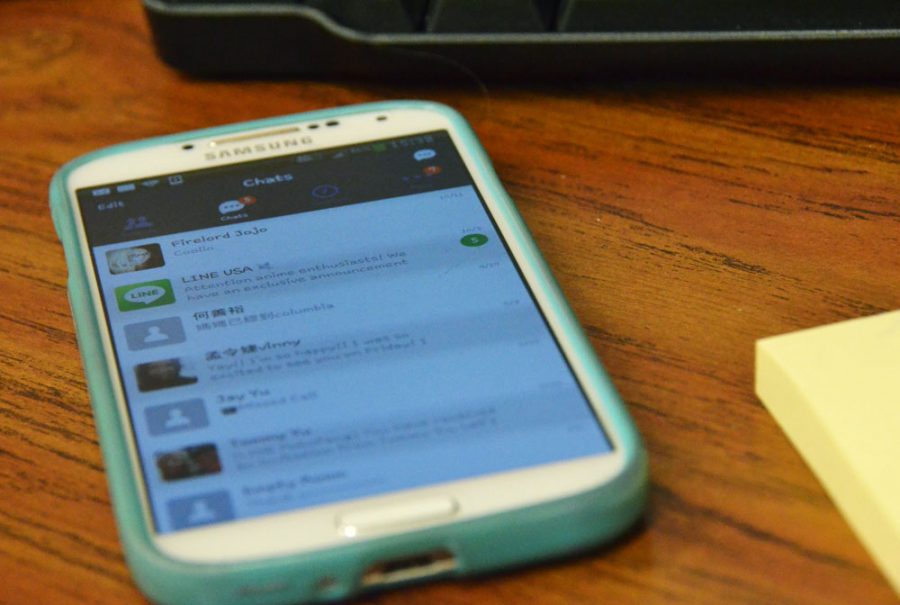With the telecommunications system destroyed as a result of the devastating Tohoku earthquake in March 2011, Japanese employees of Naver Corporation, an Internet content delivery network, turned to utilizing Internet-based resources to maintain communication, creating an app they called Line, according to reuters.com. Just three months later in June 2011, Naver decided to release Line for public use, offering free instant messaging, voice and video calling services.
Within five months, Line hit 10 million users. By July 2013, a little more than two years after its release, the app had already racked up 200 million users and by Apr. 2014, Line was proudly supporting 400 million users, according to linecorp.com.
“I find [Line] pretty easy to use and it allows me to communicate with some of my friends who can’t text me,” sophomore Joanna Yu said. “Some of my friends who don’t have an Apple product, I can talk to through LINE. It’s just an app that’s free so you can communicate with anyone.”
Joining other apps like Viber or TextNow, Line and other mobile messaging apps are offering all that a cell phone can do, but for free, reducing the demand for cell services.
Voice calling abilities are made possible through the wide reach of broadband (high speed) Internet and a method called Voice over Internet Protocol (VoIP). With VoIP, analog audio signals — what cell phones and landlines use — get transformed into digital data. A user’s voice can then be transmitted over the Internet and reverted back to analog audio signals at the other end of the line for minimal cost, according to the Federal Communications Commission.
Despite offering free messaging and free video and voice calling, these mobile messaging apps are still able to rake in income through a marketing strategy called “freemiums”. By offering a free app with premium options, apps can make a profit off of users who want and are willing to pay for quality communication services.
Along with a non-existent price tag for all users, the Internet connection that the general mobile messaging app utilizes has much more space available in comparison to cell towers, allowing for more communication.
“[Cell towers] are going to be able to work with multiple customers” Columbia Area Career Center Computer Applications teacher Nathaniel Graham said, “but there comes a point where they get flooded. That, I think is going to hit a lot faster than, say, VoIP flooding.”
But even with all the benefits of Internet, the vulnerability of Internet cables still puts it one step behind cellular towers.
“A bad dig for putting in a street light for example could cut several lines and VoIP is gone,” Graham said. “It’s that easy. But your cell phones are fine. It’s in the air.”
While the stability of communication through mobile apps still has room for improvement, its ability to establish cheap and fast contact around the world is revolutionary.
“To me, the quality of VoIP isn’t the world’s greatest at times,” Graham said. “That’s going to change, it’s going to improve, so it allows for that synchronous communication. Bringing experts together, cheaper, in real time is a great thing. It’s going to allow collaboration that’s much faster.”
By Alice YuFeature photo by Madelyn Stewart.
Editor’s note: Joanna Yu is not related to Alice Yu.



















































































Joy Park • Nov 7, 2014 at 8:14 pm
Thanks to our ever evolving technology, it seems as if there is no “correct” or “cool” way to communicate. Incorporating statistics on how many mobile communication apps are produced a year, or listing the top mobile communication apps used by students and why would be an interesting way to combine news values of impact and bizarreness.